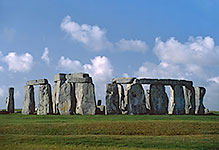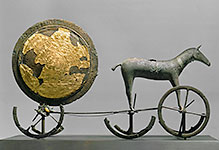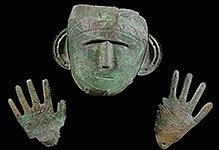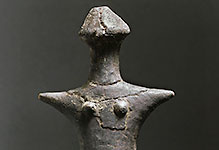
Prehistory
Palaeolithic, Neolithic, Bronze Age and Iron Age.

#03030352
Gold hammer from a tomb of an excavation at Varna, Romania. Chalcolithic (also k...

#03030353
Burial chamber of an adolescent male lying in a bed of red ochre with a large nu...

#03030354
Burial chamber of "Man of Menton" from the caves of Balzi Rossi. Bones and soil...

#03030355
Neanderthal skull from La Ferrassie, France, dating to approximately 35,000 year...

#03030356
Wax reconstruction of Neanderthal man.

#03030357
A Neanderthal tomb burial from La Chapelle aux Saints, France, dating from about...

#03030358
Skull of Homo erectus from Sangiran Java. The earliest fossils of Homo erectus,...

#03030359
Skull of Homo habilis from Lake Turkana, Kenya. Homo habilis is the earliest kno...

#03030360
Beaker burial from Shrewton; 2000 BCE. A 'Beaker' period burial from an Early B...

#03030361
Headless female terracotta figurine known as Venus of Malta From Hagar Qim, Malt...

#03030362
Stone relief with animals, cattle and goat. From Megalithic temple of Tarxien,...

#03030363
Rock paintings of human figures from Oum Ecnha, Libya.




